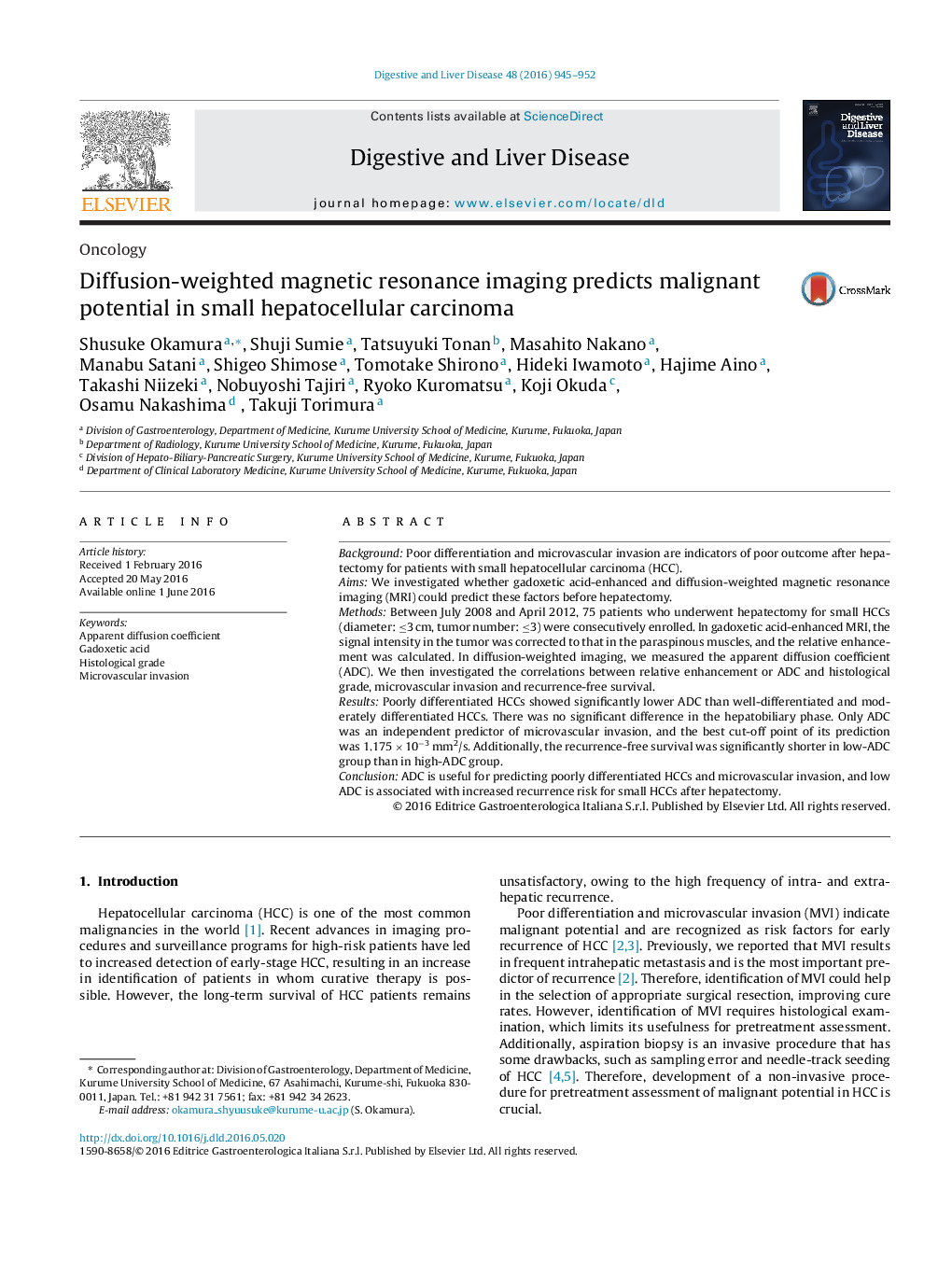| Article ID | Journal | Published Year | Pages | File Type |
|---|---|---|---|---|
| 6087949 | Digestive and Liver Disease | 2016 | 8 Pages |
BackgroundPoor differentiation and microvascular invasion are indicators of poor outcome after hepatectomy for patients with small hepatocellular carcinoma (HCC).AimsWe investigated whether gadoxetic acid-enhanced and diffusion-weighted magnetic resonance imaging (MRI) could predict these factors before hepatectomy.MethodsBetween July 2008 and April 2012, 75 patients who underwent hepatectomy for small HCCs (diameter: â¤3 cm, tumor number: â¤3) were consecutively enrolled. In gadoxetic acid-enhanced MRI, the signal intensity in the tumor was corrected to that in the paraspinous muscles, and the relative enhancement was calculated. In diffusion-weighted imaging, we measured the apparent diffusion coefficient (ADC). We then investigated the correlations between relative enhancement or ADC and histological grade, microvascular invasion and recurrence-free survival.ResultsPoorly differentiated HCCs showed significantly lower ADC than well-differentiated and moderately differentiated HCCs. There was no significant difference in the hepatobiliary phase. Only ADC was an independent predictor of microvascular invasion, and the best cut-off point of its prediction was 1.175 Ã 10â3 mm2/s. Additionally, the recurrence-free survival was significantly shorter in low-ADC group than in high-ADC group.ConclusionADC is useful for predicting poorly differentiated HCCs and microvascular invasion, and low ADC is associated with increased recurrence risk for small HCCs after hepatectomy.
